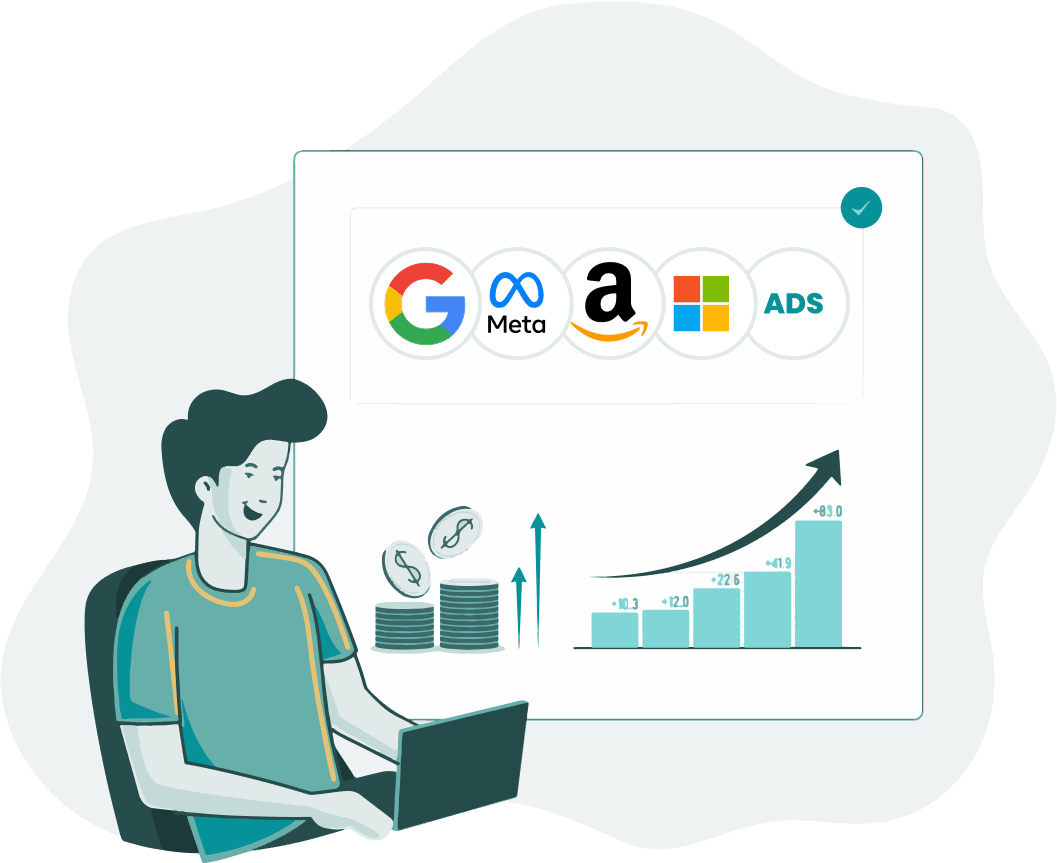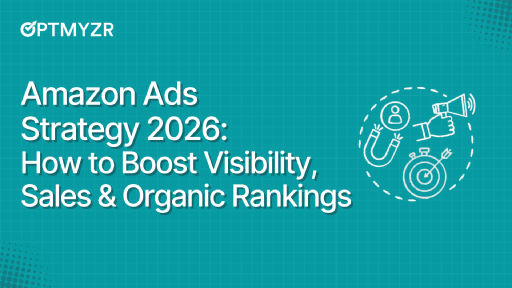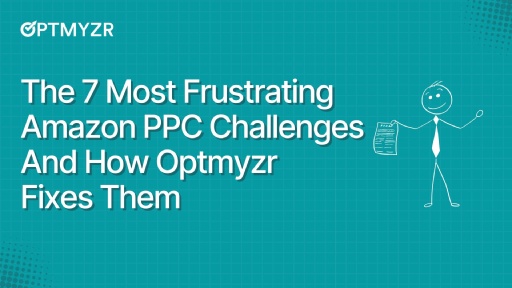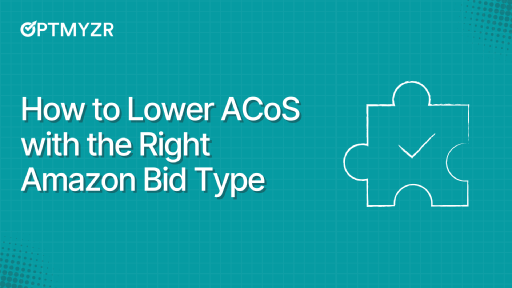Amazon advertising can be complex, and success comes down to mastering a few critical elements. It begins with a product listing engineered to convert interest into decisive purchases.
From there, a focused keyword strategy ensures budgets are spent on terms that truly deliver results. A clear campaign structure then provides the control needed to scale efficiently.
Finally, disciplined optimization uncovers opportunities before they slip away.
This guide breaks down the four essential pillars of an Amazon Ads strategy that drives sustainable growth and profitability.
Before you dive in: Key terms to know
|
1. Make sure your listing can actually convert before you increase ad spend.
Before increasing ad spend, it’s worth stepping back to ask: Is the listing built to convert?
Ads can drive traffic, but it’s the product page that needs to close the deal. Without a compelling listing, those clicks often lead nowhere.
What to optimize first
These are the essentials to dial in before scaling ad efforts:
- High-quality images: Clear, professional visuals that show the product in use tend to build trust. Lifestyle shots, close-ups, and comparison charts can make a major difference.
- Keyword-rich, readable title: Titles that balance strong keywords with readability are more likely to catch attention and earn clicks.
- Benefit-focused bullet points: Rather than listing specs, top-performing listings highlight how the product solves a problem or adds value to everyday life.
- Trust-building description: This space often helps overcome objections and reinforce why the product stands out. A good description builds confidence and connection.
- A+ Content (for brand-registered sellers): Enhanced content with visuals and storytelling elements helps establish credibility and differentiate the brand.
- 20+ solid reviews: Social proof plays a major role in conversions. Building up review volume through compliant post-purchase strategies often pays off.
🧠Pro Tip: Don't underestimate the impact of video on your product listings. While you're optimizing your images and text, consider adding high-quality product videos. Shoppers today often prefer to see a product in action. Think about including product demos, lifestyle shorts in video format, or customer testimonials in video. |
Why this matters
When conversion rates improve, Amazon takes notice. Strong listings can earn better ad placements and lower CPCs, creating a healthier feedback loop for growth.
Before scaling spend, a listing audit is often the first (and smartest) move.
💡Optmyzr Tip: Our Amazon-specific audits can help catch issues that might be hurting conversion rates. Test out audits like Products not Delivering to catch ASINs with zero impressions, Campaigns with Less ROAS to find underperformers that might be tied to weak product pages, and Expensive Keywords to spot where you're spending without seeing returns. |
2. Start broad with keywords, but refine quickly based on real performance.
Keyword strategy can make or break Amazon campaigns. It’s not about adding more keywords, it’s about focusing on the ones that drive results.
It can be helpful to start broad and then refine. Automatic campaigns can provide insights into how shoppers are searching, and some search terms might be different from expectations.
Once you have some data, get intentional with your targeting.
Keyword strategy tips
- Start broad, refine fast: Starting with 50–100 keywords and evaluating performance can help identify which keywords might be worth continuing and which could be adjusted.
- Promote proven performers: Monitoring keywords that generate sales with a reasonable ACoS (2+ sales at under 30% ACoS) may indicate areas that could warrant further investment.
- Know your terms: Keywords are what advertisers bid on. Search terms are what shoppers type. That distinction is key to optimizing effectively.
- Use match type with purpose: Choose keyword match type based on your goal—broad match types can uncover new opportunities, phrase match types can offer a bit more control, and exact match types can help with targeting specific queries.
Use negatives when needed
Cleaning up traffic is just as important, as not all visits may lead to the desired outcomes. It can be useful to evaluate spend efficiency, especially if certain terms consistently use a significant portion of a product’s price without generating conversions.
This could be a signal to reconsider those terms.
Negative keywords, when applied at the right level, whether campaign or ad group, can help curb unnecessary spend.
Regular audits are a good practice, as keywords that didn’t convert last month may still be affecting the budget, making it worth checking in on performance periodically.
To make this process easier, Optmyzr’s Rule Engine includes a pre-built strategy that flags non-converting search terms and ASINs, so you can quickly add them as negatives and keep your campaigns efficient.
{{< figure src="/forestry/optmyzr-amazon-ads-non-converting-keywords-and-asin-terms.webp" >}}
Similarly, missing out on converting search terms means leaving potential revenue on the table.
That’s where another pre-built strategy, “Add converting search terms as keywords,” helps you capture these valuable opportunities.
{{< figure src="/forestry/optmyzr-amazon-ads-add-new-keywords.webp" >}}
This way, you’re not just spending efficiently, but also driving real profit from terms that convert.
3. Structure your Amazon Ads account like a blueprint for scalable growth.
A messy campaign structure leads to wasted spend and missed opportunities. If you want to scale efficiently, your account needs to be clean, organized, and easy to optimize.
Think of structure as your growth blueprint. It’s what gives you visibility, control, and the ability to scale what’s working
Here’s a simple but effective framework:
1. Start with discovery through Automatic Campaigns.
Automatic campaigns in Amazon Ads are campaigns where Amazon decides which search terms and product pages your ads show up for, based on your product listing content (title, bullets, description, backend keywords, etc.).
These campaigns act as search engines. Use them to uncover real search terms your customers are using, often different from what you expect.
Let Amazon match your products to related queries and ASINs. Watch what gets clicks, what converts, and where your wasted spend is going. Then mine those insights for manual targeting and negatives.
2. Get specific with manual keyword targeting.
Once you’ve identified high-performing search terms, move them to manual campaigns where you can optimize bids, match types, and placements. This gives you full control over your strategy, enabling you to maximize ROI.
For example, let’s say a brand sells wireless smart speakers. After running automatic campaigns, it discovers that terms like “best wireless speaker for home,” “smart speaker with Alexa,” and “portable Bluetooth speaker” are generating solid clicks and conversions.
These high-performing keywords can now be transferred to a manual campaign, where the brand can adjust bids for each term.
3. Outsmart competitors with product targeting.
Product targeting offers a more direct approach than traditional keyword targeting.
While keyword targeting involves bidding on search terms that potential customers might use, product targeting lets you place your ads alongside specific products, categories, brands, or product features.
You can compete directly with other brands by showing your ads on their product pages. This strategy can help draw attention away from their listings and direct it toward yours.
For example, if a brand sells premium coffee makers, they could use product targeting to display ads on product pages for similar coffee makers or within categories like “coffee machines” or “home brewing equipment.”
Moreover, it’s not limited to Amazon’s platform. Sponsored Display ads extend your reach beyond Amazon, appearing on external websites or apps that your potential customers visit.
4. Double down on what works with winner campaigns.
Don’t let your best keywords or targets stay buried in broader campaigns. Once a product or term consistently hits your performance benchmarks, move it into a dedicated campaign.
This gives you tighter budget control, clearer reporting, and the ability to scale spend without interference from underperformers in the same campaign.
Best practices for a manageable and scalable structure
- One campaign, one ad group: Keep campaigns focused. This helps pinpoint what’s working and what’s not, allowing for better control over bidding, budgets, and scaling.
- Shift spend with intent: Regularly evaluate performance and reallocate budget to high-performing campaigns, based on metrics like ACoS, ROAS, or conversions.
- Use clear, consistent naming conventions: Make campaign names simple and descriptive. Include details like targeting type (auto/manual), product type, and performance tier for easy understanding and error reduction.
💡Optmyzr Tip: When scaling winning campaigns, budget caps can create unexpected slowdowns. Optmyzr’s Spend Projection Tool forecasts which campaigns are on track to max out before it happens. It analyzes trends, seasonality, and recent performance to deliver a smart spend range and help adjust budgets proactively to keep top performers running strong when it matters most. |
4. Use automation and alerts to respond faster to performance shifts.
Success on Amazon isn’t a one-time effort, it’s about ongoing analysis and action. Regular optimization ensures that you’re staying ahead of the competition and making the most out of your ad spend.
Track and act on these key metrics:
ACOS, ROAS, TACoS: Keep a close watch on these key performance indicators to assess how efficiently you’re spending on ads versus the returns you’re getting.
CTR, conversion rate: These metrics help gauge the effectiveness of your ad copy, targeting, and landing page experience.
Search term performance: Regularly evaluate which search terms are driving the best results and ensure they’re incorporated into your manual campaigns.
Sales (ad-attributed + organic): Track both ad-driven and organic sales to understand how your paid efforts are affecting long-term growth.
Impression share: This metric tells you how much visibility your ads are getting compared to the competition. A low impression share might signal a need for higher bids or more targeted campaigns to capture more of the market.
💡Optmyzr Tip: Set up account alerts to get notified instantly when key metrics such as ACoS, ROAS, and Conversion Value shift. This helps you react quickly to changes, avoid overspending, and seize new opportunities without monitoring your campaigns manually. |
What to do & when
- Weekly: Review your campaigns and add negative keywords. This prevents wasted spend on irrelevant or underperforming search terms, ensuring you’re only paying for traffic that’s likely to convert.
- Bi-weekly: Dive into your automatic campaigns to identify new high-performing keywords and search terms. These hidden gems should be moved to manual campaigns for better control and optimization.
- Monthly: Take a step back to assess your overall performance. Reallocate budgets to campaigns that are delivering the best results. Focus on profitability metrics and adjust bids where needed to maintain efficiency.
- Quarterly: Refine your entire strategy by restructuring your campaigns. Use performance data to make informed decisions about targeting, bidding strategies, and creative adjustments. A quarterly review helps ensure that your approach remains aligned with evolving market conditions and consumer behavior.
Take control of your Amazon Ads with Optmyzr.
Amazon Ads success largely depends on four things: listings that convert, keywords that work, campaigns built to scale, and constant optimization that protects your profit.
But managing all these components can quickly become complex and time-consuming.
That’s where Optmyzr makes a difference. Our tools simplify campaign management by uncovering high-impact keywords, organizing account structure for scalability, and automating routine optimizations, freeing you up to focus on strategy and growth.
Ready to take control of your Amazon advertising performance? Start your fully functional 14-day free trial today!









